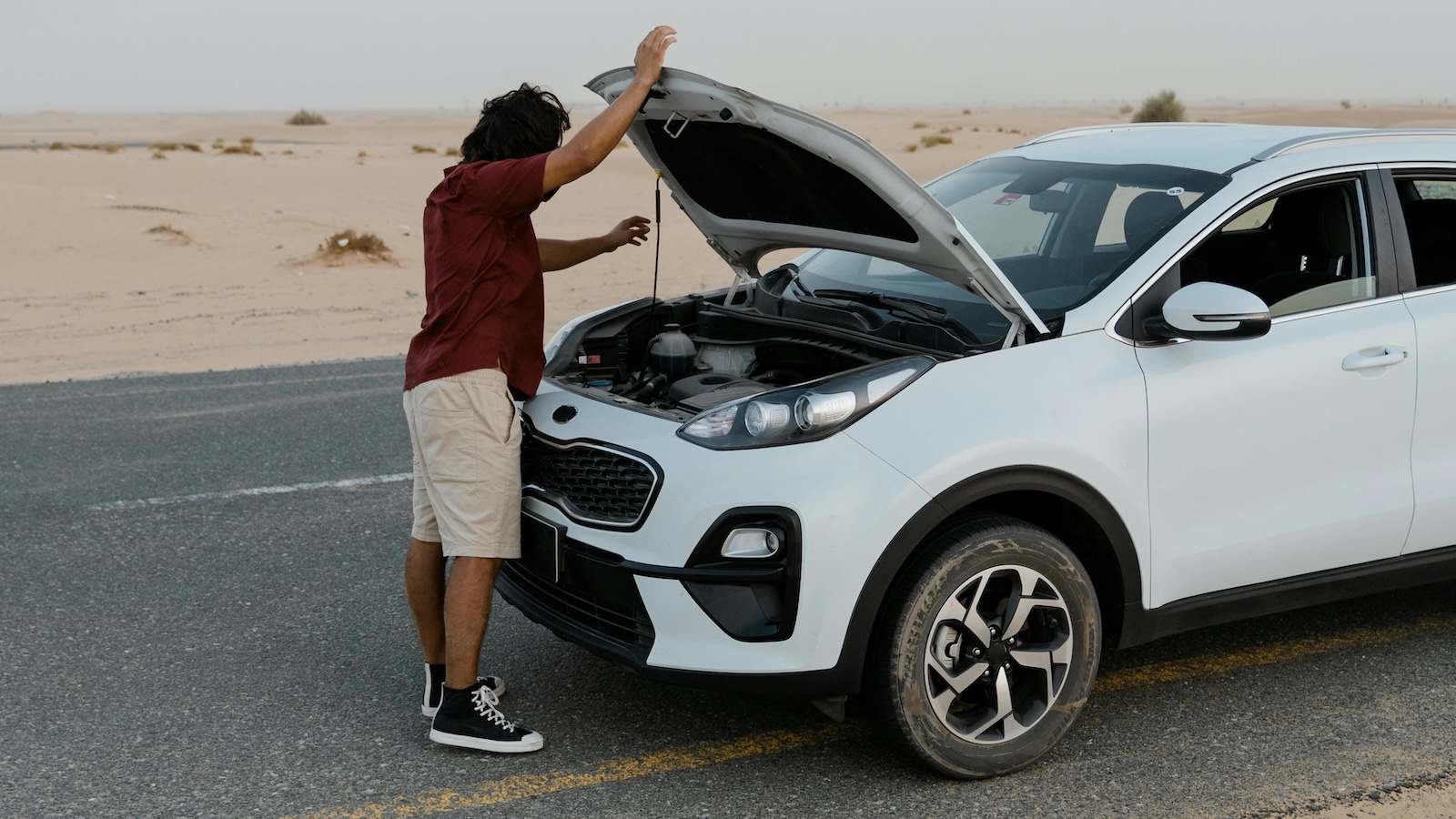Over the past few years, driver-facing cameras have become a burning issue in the transportation industry. Despite enormous safety benefits, the trucking companies are not putting them into practice. This raises a number of worrisome questions.
- Why are companies not implementing them?
- Are there any impacts of driver-facing cameras on truck drivers?
With the aid of industry experts and insights from American Transportation Research Institute (ATRI), here is what we have discovered so far.
U.S. Truck Accident Key Statistics: Common Causes
The American trucking industry is solely responsible for hauling 73% of domestic freight, playing a huge role in the nation's economy. Unfortunately, it is also one of the biggest life-threatening industries for on-road passenger vehicles.
According to a Forbes report, there were more than half a million accidents by large trucks in 2021, a 26% rise from the previous year. Following are the common causes that are found to have the greatest impact on truck crashes:
- In 6.7% of accidents, the driver was intoxicated.
- 7.3% of fatal accidents involved excessive speeding by the driver.
- 5.2% of collisions were caused by the driver’s inattention and impairment.
Introduction of Driver-Facing Cameras (DFCs) to the Trucking Industry
After a decade of research, the Automobile Association of America's (AAA) Foundation for Traffic Safety found that 87% to 92% of the country's road crashes are the result of the driver’s irresponsible behaviors or errors. The foundation further recognized the potential of advanced safety technologies (ASTs) in reducing large truck collisions because of the driver’s errors. This includes the incorporation of an array of ASTs, and video-based onboard safety monitoring (OSM) systems are one of them.
The 2017 AAA research states that 63,243 truck-related collisions, 2,753 physical injuries and 293 fatalities annually could be prevented if all trucks installed this advanced video-based safety monitoring system. Vendor-sponsored research by the Virginia Tech Transportation Institute indicated even bigger numbers. According to that study, amalgamating the in-cab video monitoring device and adequate driving training could lower truck-related crashes by 25,007 and casualties by 801.
That is how the concept of driver-facing cameras was introduced to the trucking industry.
But how does it function? Let’s have a glimpse.
See also: Automakers Build New Insurance Future
Driving-Facing Cameras: An Overview
Driving-facing cameras are installed in a truck right in front of the trucker’s face. The driving OSM constantly monitors and records the driver’s activities. Following are its additional capabilities:
- Consistently record the driver’s behavior day in and out and flag a safety-related event if needed.
- Save safety-related event recordings for post-journey evaluation.
- Provide supervisor the real-time warning for safety-related events via email/ text.
- Provide truck drivers real-time assistance in cases where they are helpless and are not able to respond.
Benefits of Driver-Facing Cameras
The driving-facing camera system benefits the truck drivers in numerous ways:
- Safer driving: Because the onboard safety system constantly alerts the truck driver related to any safety concern, it promotes healthy driving practices.
- Defense against unreasonable claims: The recorded videos can be used to prove a driver’s innocence in case of any false accidental or traffic violations accusations.
- Lower insurance premiums: Incorporating the driver-facing cameras in trucks mitigates collision risks, reducing premium costs.
Now the question arises: With these many significant benefits of driver-facing cameras, why is this technology not getting implemented on a large scale?
Let’s get to know what truckers have to say about it.
See also: Auto Claims and Collision Repair: The Great Reset
The Impact of Driver-Facing Cameras on Truck Drivers’ Perceptions: Key Findings
ATRI conducted a driving survey in which truckers were asked to rate DFCs on a scale of 0 to 10 based on four key criteria: safety, litigation, privacy and overall approval. Here are the results:
Safety Perceptions
The current truck drivers who are using DFCs have rated their ability to boost safety at 2.6/10, twice as much as the truckers who have never used them and 1.5 times as much as the ones who have used DFCs in the past.
Impact of Gender on DFC Safety Perspectives
Both female and male truckers shared the same perspectives on DFCs' potential for their safety, with females' ratings slightly lower than those of males.
Litigation Perceptions
Current truck drivers rated DFCs’ potential to positively influence litigation as approximately 4/10, again more than twice that of the truckers who have never used it.
The rest of the drivers shared a different perspective and stated that, with adequate footage, a plaintiff's attorney can locate the minute error and use it against the truckers if there is no other substantial evidence of the driver’s irresponsible behavior or error found in the case. This has been accepted as a fair concern by both parties: truck drivers and defense attorneys.
However, the motor carriers can mitigate this issue by backing the truckers by limiting the recording or retention of footage that is not related to a safety event.
Impact of Gender on DFC Litigation Perspectives
Both male and female drivers shared the same perspective on the positive impacts of DFC litigation.
Privacy Perceptions
Among all four key areas, drivers rated the DFCs' capabilities to protect their privacy the lowest. Drivers who have never used DFC technology had the most negative attitude toward it.
Upon being asked, the drivers shared their different privacy concerns. One of them was an intrusion into their privacy during off-duty hours in the sleeper cabs. They shared examples where DFCs turned on automatically or when their supervisors shared the recorded footage while they were off-duty.
An intermodal driver said it’s hard to focus when a camera is directly pointed at your face. The driver said the truck is a living space as well as a workspace, and the company does not own any rights to meddle in the driver's privacy.
Impact of Gender on DFC Privacy Perspectives
Female truck drivers rated DFCs' potential to protect their safety 34% lower than male truck drivers. Some of them complained about cases of voyeurism and sexual harassment by workers tasked with reviewing DFC footage. Clearly, irrespective of gender, the drivers’ safety perceptions of DFCs are cynical.
Overall Approval Perceptions
The current users gave an overall approval rating of 2.24 for the driver-facing camera technology, which is closer to lower privacy ratings.
Impact of Gender on DFCs' Overall Approval Perspectives
It is very evident that female truck drivers have major concerns regarding DFC privacy, so the overall approval rating would be lower from their side. As the sector places more emphasis on hiring female truckers, it’s high time that these issues be given primary attention.
See also: Using GPS and AI to Improve Asset Tracking
DFC Functionality Changes Truck Drivers’ Perceptions
According to a report by ATRI, the different video formats, functionalities and attributes also have a major impact on truckers’ perceptions. For instance, DFCs support two different formats: event-based recording triggered by sensors and continuous recording. Here is what truck drivers have to save about these two formats:
Safety Perceptions
On average, respondents preferred event-based DFCs 21% more than continuous recording for safety perceptions.
One of the LTL drivers even said, "The continuous DFCs actually jeopardize my safety and that of my co-passengers, as I feel stressed and anxious about being watched, even though I am making no mistakes.”
Litigation Perceptions
Again, the truckers rated event-based DFCs' litigation effectiveness a bit higher than the continuous format.
Privacy Perceptions
Regardless of gender, truck drivers are also convinced that employing event-based DFCs has slightly better protected their privacy. However, the major privacy concerns remain the same.
Overall Approval Perceptions
In light of respondents' preferences for event-based driving-facing cameras, it is crystal clear that the truck driver’s perceptions would improve over time when they could see and sense the trust in recording clips.
Driver Suggestions for Greater DFC Acceptance
When the ATRI asked the respondents to share their opinions on what can be done to improve DFC acceptance, here is what they suggested:
View footage only after the crash
19% of respondents suggested that the recorded footage is only meant to be used as evidence in the event of a crash or collision and not for any internal assessment.
Off When Not Moving
Nearly 17% of respondents recommended that the DFCs be off when the driver is off-duty or on break or when a truck is in the parking area. As with the prior studies, it is evident that truckers have a low tolerance for any issues that raise major trust concerns. This is why a lot of drivers suggest a mechanical shutter that can be closed manually, ensuring no DFCs are on while they are off-duty.
Full Driver Control
Roughly 14% of truck drivers want to have full control over DFC use. This includes authority to decide when the camera will be on and whether to give access to the footage.
Less Fault-Seeking
What motor carriers or safety instructors see as fault-seeking, 12% of truck drivers consider nitpicking. There are numerous ways in which carriers can handle such sensitive issues. One, they should put more emphasis on results rather than pointing out minute errors. Second, they can develop coaching programs in which the instructors discussing clips share the same commercial driving background and guide the drivers. Third, they can implement driver-led coaching that boosts the driver’s self-confidence in handling safety-critical events.
Less Sensitive Triggers
More than 9% of truck drivers said event-based DFCs should only be turned on by crucial safety incidents. On this, ATRI recommended MC take the necessary steps to adjust camera sensitivity, including light and sound alerts.
Commensurate Pay Increase
7.3% of truck drivers shared that incorporating the DFCs into trucks makes them anxious and unsafe. This is why, as compensation, there should be a pay raise while all the camera policies would still remain the same.
Full Driver Access
7% of truck drivers asked for full access to DFC footage and a formal assurance that no other unnoticed clip was collected.
No Punitive Use
Another category of truck drivers’ concerns is associated with punitive use of DFC footage. 6.7% of truckers fear that a clip can be used for punishment or to cut down on their bonuses.
Probation Drivers Only
5.8% of truck drivers suggested that DFCs should be employed for new drivers or drivers who have safety breach issues and not for drivers with a clean safety background check. However, the legal advisers suggested the other way and recommended keeping the camera on to stay away from litigation vulnerability.
Better Communication
Clear communication is the easiest way to improve drivers’ acceptance of DFC technology, according to 3.3% of truckers. Carriers should clearly convey the DFC's use, policies and how it will do no harm to drivers. They should give a reasonable explanation about the circumstances in which a recorded clip will be used and who would have access rights to it.
Final Words
With DFCs having an average overall approval rating of 2.24, it is obvious that truck drivers don’t have great regard for driver-facing cameras, largely due to privacy and litigation concerns. However, if we look at the brighter side, current users have shown a more positive interest in DFCs than truckers who have never used them.
Moreover, the ATRI research reports suggest that by implementing changes in DFC functionalities and adopting the drivers' suggestions, the perceptions of truck drivers toward DFCs could be improved.






